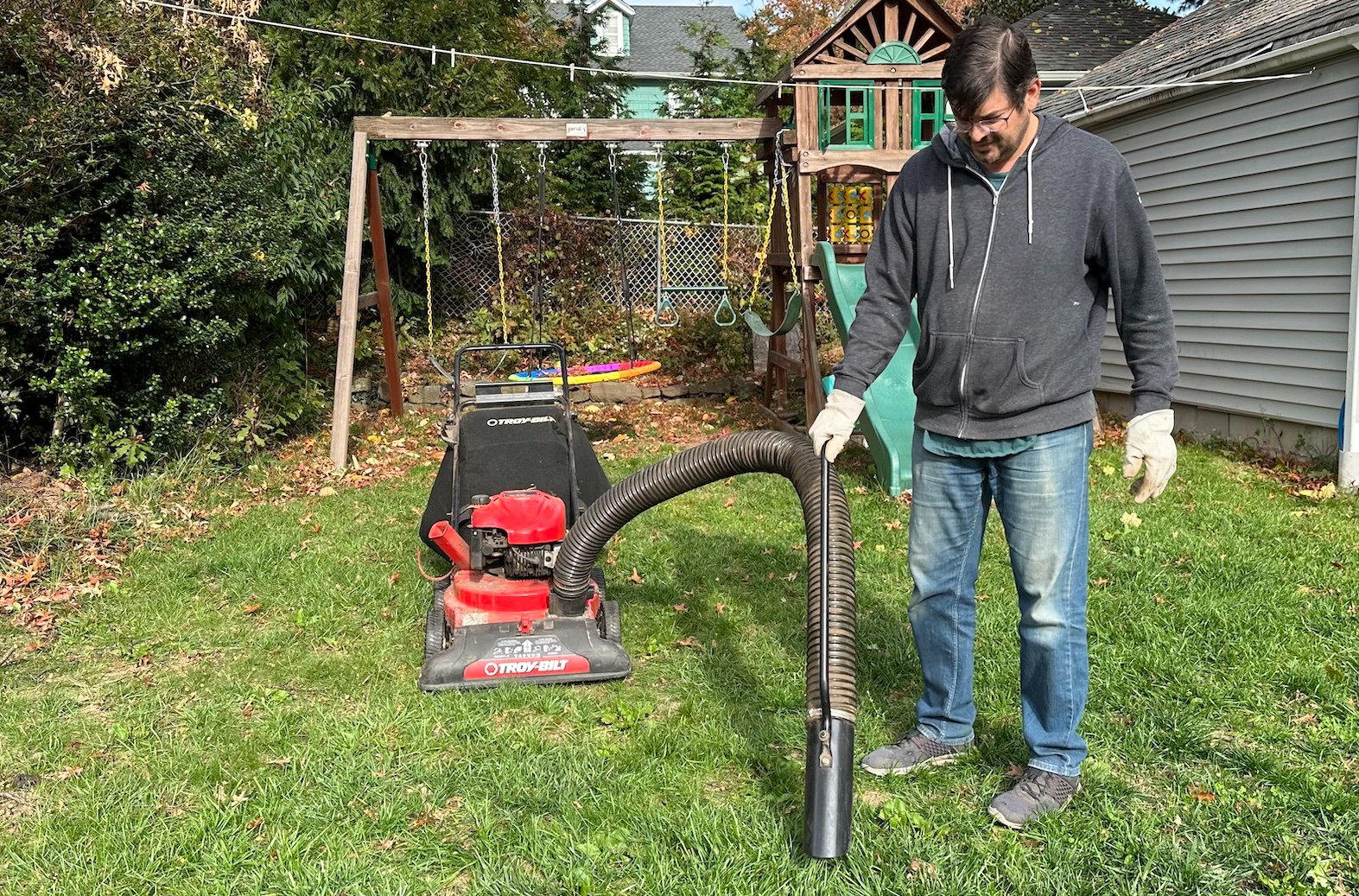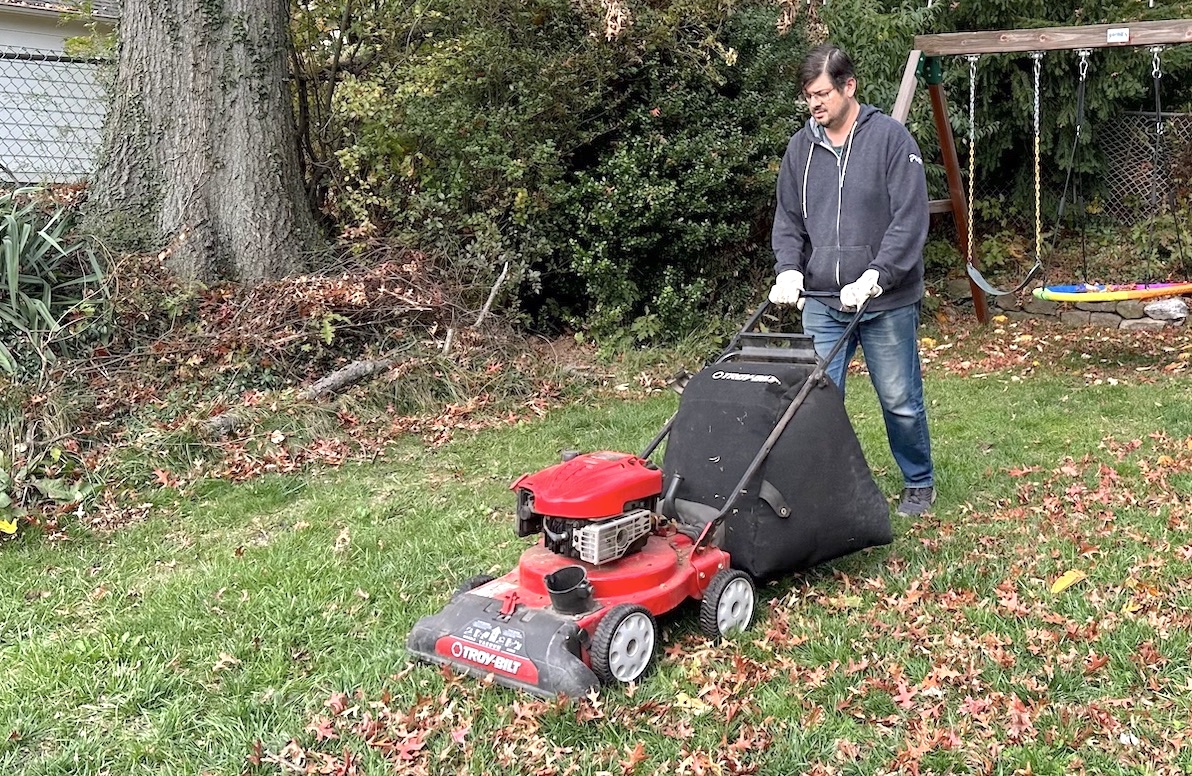I’ve been using this leaf vacuum — and it’s a game changer
Every autumn, the chore of raking falls once again on millions of us, as trees shed their leaves in preparation for winter. I’ve used four different tools to collect leaves in my yard, but ever since I got a leaf vacuum, I use it almost exclusively to pick up the leaves from my yard. In case you’re looking for an easier way to pick up leaves, I’ll tell you why I like it so much, as well as a few things I think it could do better.
A couple years ago, my brother-in-law was downsizing his yard, and no longer needed his lawn vacuum, so he graciously offered it to me. Being the gadget-lover I am, I eagerly wheeled it into my garage, alongside my lawnmower, generator, leafblower, and a bunch of bikes, some of which are in various states of repair. All I needed to do was replace its pull cord — which cost me all of $10 and about an hour of my time — and I was good to go.
The lawn vacuum looks much like a traditional push lawnmower, but in the front is a rubber opening that sucks leaves into a main chamber, where they’re mulched and then sent into a heavy-duty collection bag. A new model, such as the Troy-Bilt Leaf Vacuum, sells for $799 on Home Depot (opens in new tab).
One of the things I like about the leaf vacuum is that it turns two steps into one: Instead of having to rake all the leaves into a pile and then mulch them, I can do it all in one go.
Of course, if you don’t want to drop $800 on yet another piece of equipment, you can also buy a mulching blade for your lawnmower. These are far less expensive — you can get them for around $30 – $40 at hardware stores. It won’t leave your yard completely leaf-free, but studies have shown that leaving some leaves on your lawn is beneficial in the long run.

The leaf vacuum is also helping me solve another issue I’ve had: At one end of my yard is a magnificent oak that’s about 100 feet tall, and provides some much needed shade on hot summer days. However, it also produces a prodigious amount of acorns.
One of the things I like about the leaf vacuum is that it turns two steps into one. Instead of having to rake all the leaves into a pile and then mulch them, I can do it all in one go.
Every 2-3 years, an oak has what’s called a mast year, where it drops far more acorns than in other years. I remember first learning about this phenomenon one spring, when my entire backyard seemingly sprouted a forest’s worth of oak trees overnight. My wife and I spent hours pulling up small oak seedlings without ever making a dent. I eventually just mowed over them.
My electric, handheld leafblower/vacuum wasn’t powerful enough to deal with the acorns, but the lawn vacuum has proved equal to the task. It comes with a hose attachment that lets me hoover up the acorns. It’s pretty tedious and less than perfect — I figure there will be plenty of seedlings next spring — but maybe there won’t be as many as in years past.
The hose also works great for picking up leaves that collect in the corners of my yard and along the fence. You do have to lug the vacuum along with you, though.

One last feature of the lawn vacuum is that it can also mulch small branches — ones about an inch in diameter, max. Short of burning the twigs in a fire pit, it’s a good way to dispose of and use them in my yard.
However, it does have a couple of drawbacks. For one, it’s a gas-powered device, so while not at the same annoyance level as a gas-powered leaf blower, it does make more noise than electric models — or the human-powered rake. And, being a gas-powered device, it’s also a bit heavier to push around the yard than my electric mower.
I also like the vacuum’s heavy-duty collection bag, which feels built to last as long as the trees themselves. Its latching mechanism — two small metal tabs that rotate — can be a bit fussy, especially if you’re wearing a pair of gardening gloves.
And, as mentioned earlier, it’s not cheap, so it’s a lot of money to drop on what’s essentially a single-purpose device. But, it does its intended job well, so it could be a good choice for those with a lot of leaves, and who don’t want to deal with a leaf blower.
Looking for other fall cleanup tips? You want to make sure you know how to rake leaves the easy way and the right kind of rake to use. If you’re about to upgrade, here are five things to know before buying a leaf blower, and how to use a leaf blower the right way. And, instead of bagging your leaves and putting them on the street, be sure to check out our guide on how to use fallen leaves in your garden.
For all the latest Technology News Click Here
For the latest news and updates, follow us on Google News.
